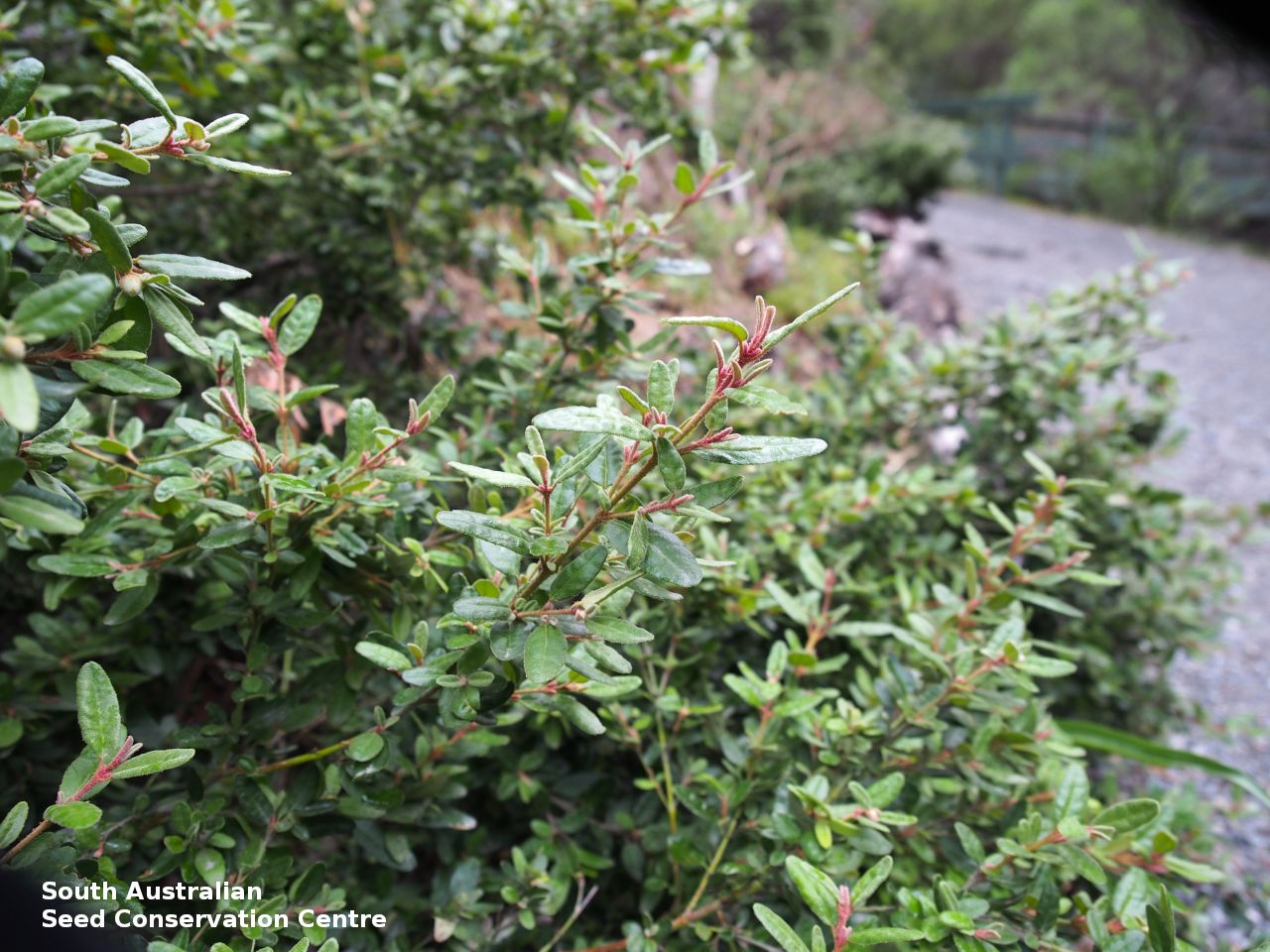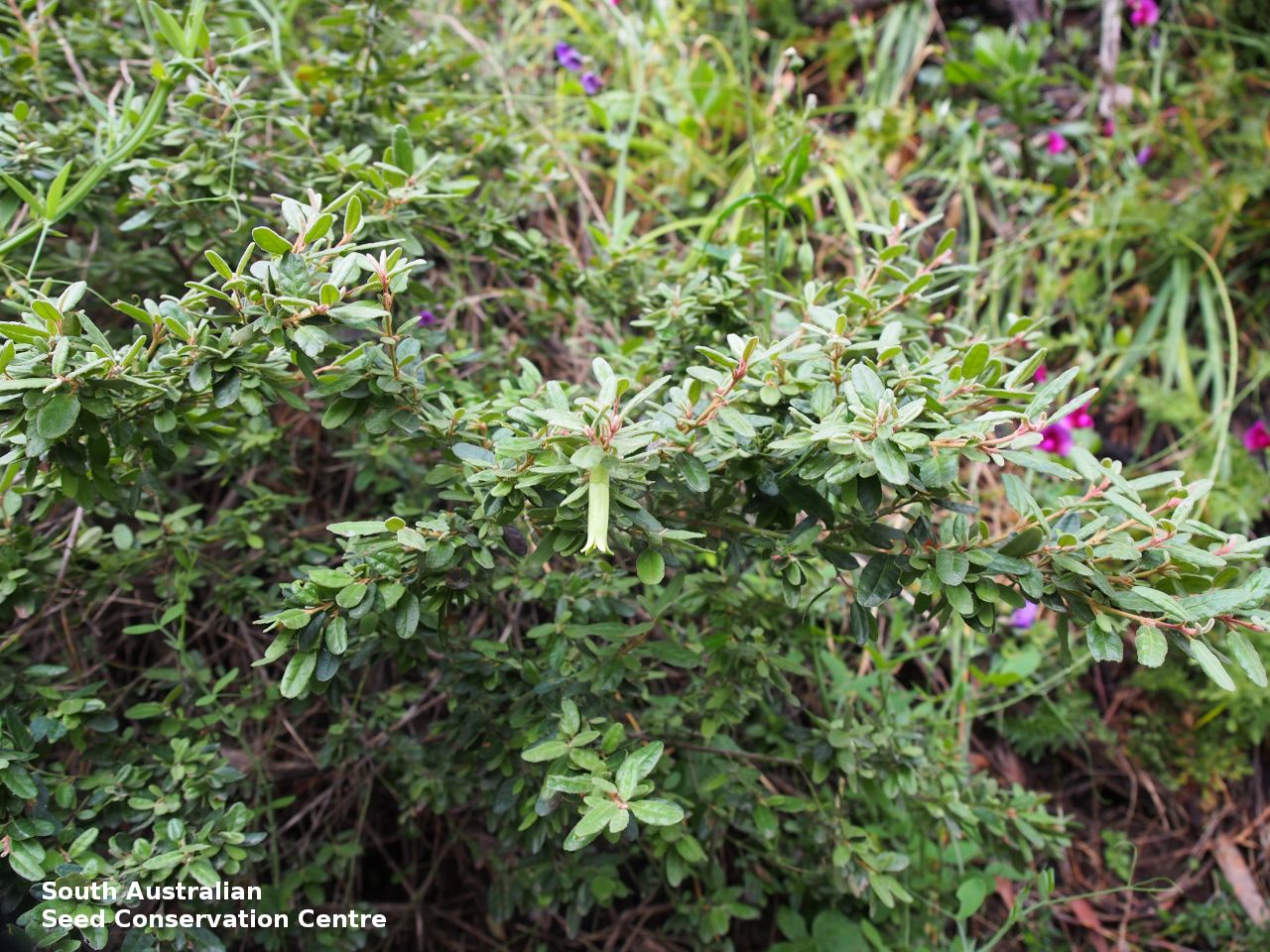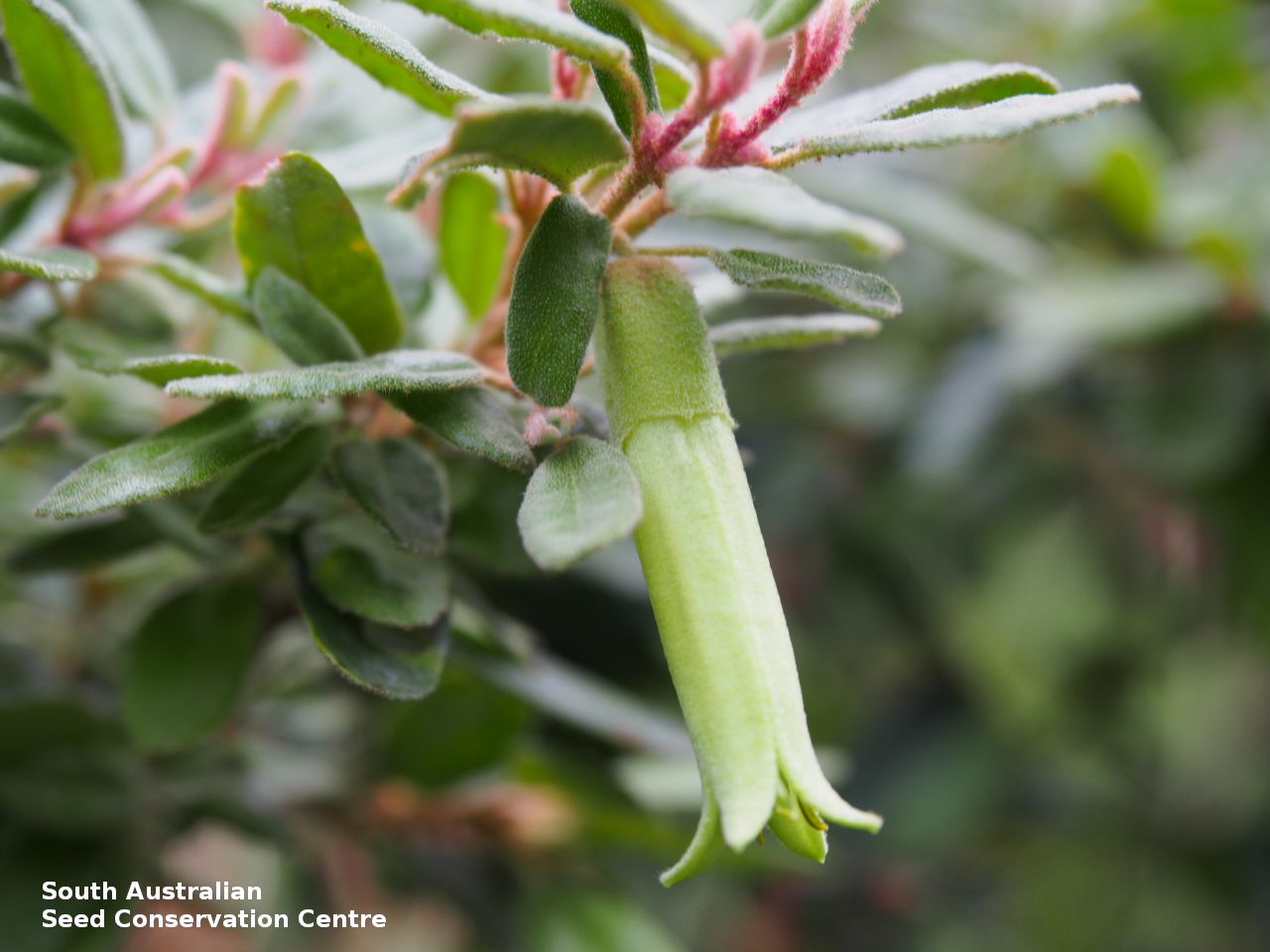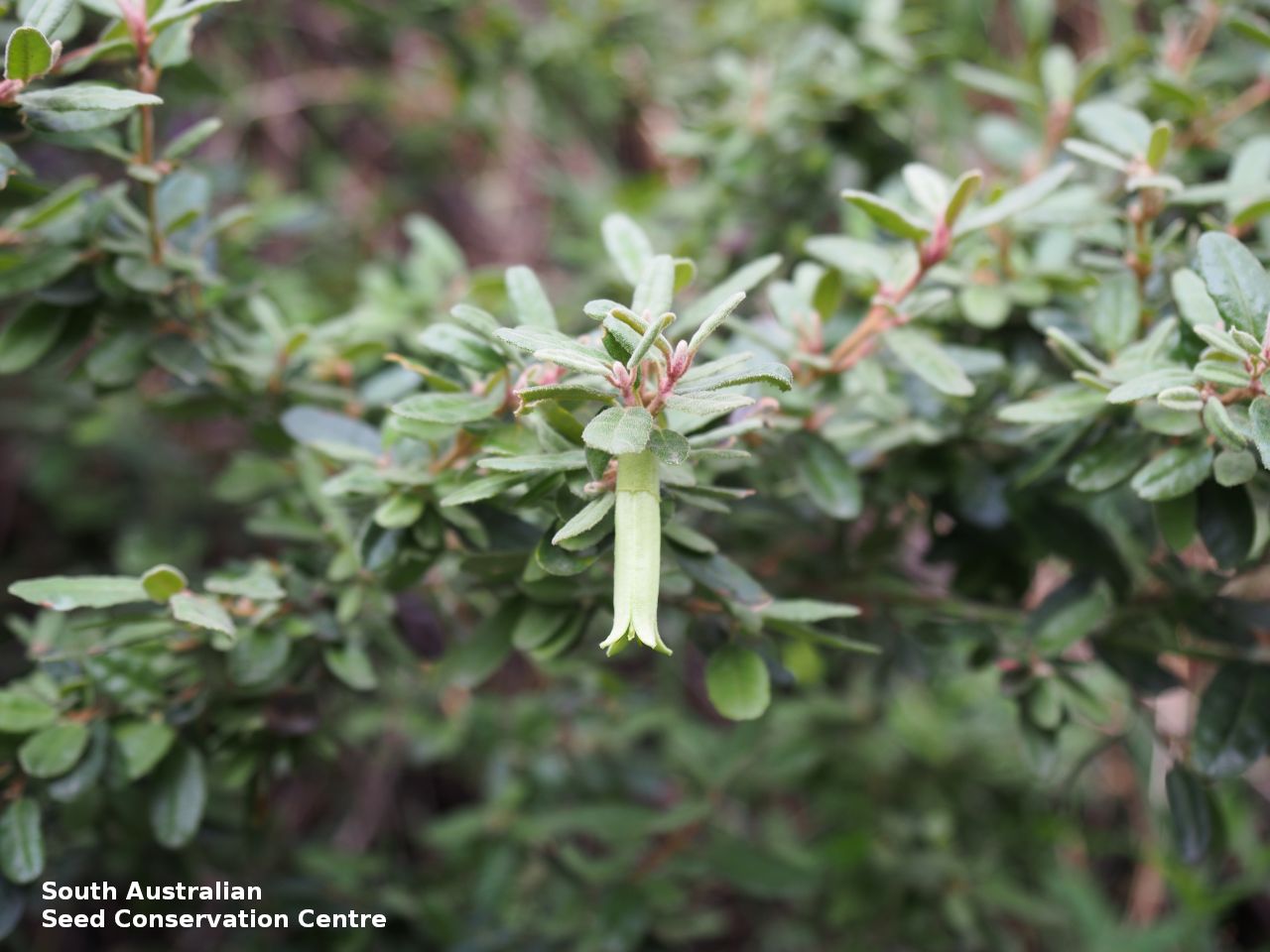







Botanical art
Prior names
Correa rubra var. megacalyx
Common names
White-stemmed Smooth Correa
Rock Correa
Etymology
Correa named after Jose Francisco Correa de Serra (1751-1823), a Portuguese botanist. Glabra from Latin meaning smooth, without hairs. Leucoclada from the Greek 'leucos' meaning white and 'klados' meaning a branch; referring to a covering of white down which easily rubbed off on the young shoots.
Distribution and status
Found in the southern Mount Lofty ranges in South Australia, growing in hilly situations along banks of streams. Also found in New South Wales. Native. Rare in South Australia. Common in New South Wales.
Herbarium regions: Southern Lofty, Green Adelaide
NRM region: Adelaide and Mount Lofty Ranges
AVH map: SA distribution map (external link)
Plant description
Erect shrub to 3 m high with hairy to glabrous stems. Leaves narrow- to broad-elliptic or occasionally obovate, to 4 cm long and 17 mm wide, apex obtuse to rounded, base rounded to cuneate, upper surface smooth or sparsely hairy, lower surface densely hairy. Inflorescence solitary, terminal on short axillary shoots with tubular pale green flowers. This variety differ from Correa glabra var. turnbullii having pale green flowers rather than red and from C. glabra var. glabra by having tomentose leaves below and tomentose cup-shaped to shortly cylindrical calyx rather than glabrous or glabrescent leaves and glabrous or glabrescent, hemispherical calyx. Fruits are white to green capsule to 8 mm long enclose by the sepals. Seed embryo type is linear fully developed.
Seed collection and propagation
Collect seeds between December and February. Collect mature capsules, those that are turning a pale straw colour and contain hard seeds, either by hands or place small breathable bags over immature capsules to collect seed. Capsules maybe hard to see as it is enclose by the sepals. Place the capsules in a tray and leave to dry for a weeks. Then rub the capsules gently by hand to dislodge the seeds. Be very careful as the seed coat is thin and easily damaged. Use a sieve to separate the unwanted material. Store the seeds with a desiccant such as dried silica beads or dry rice, in an air tight container in a cool and dry place. This species has morphophysiological dormancy and can be difficult to germinate.